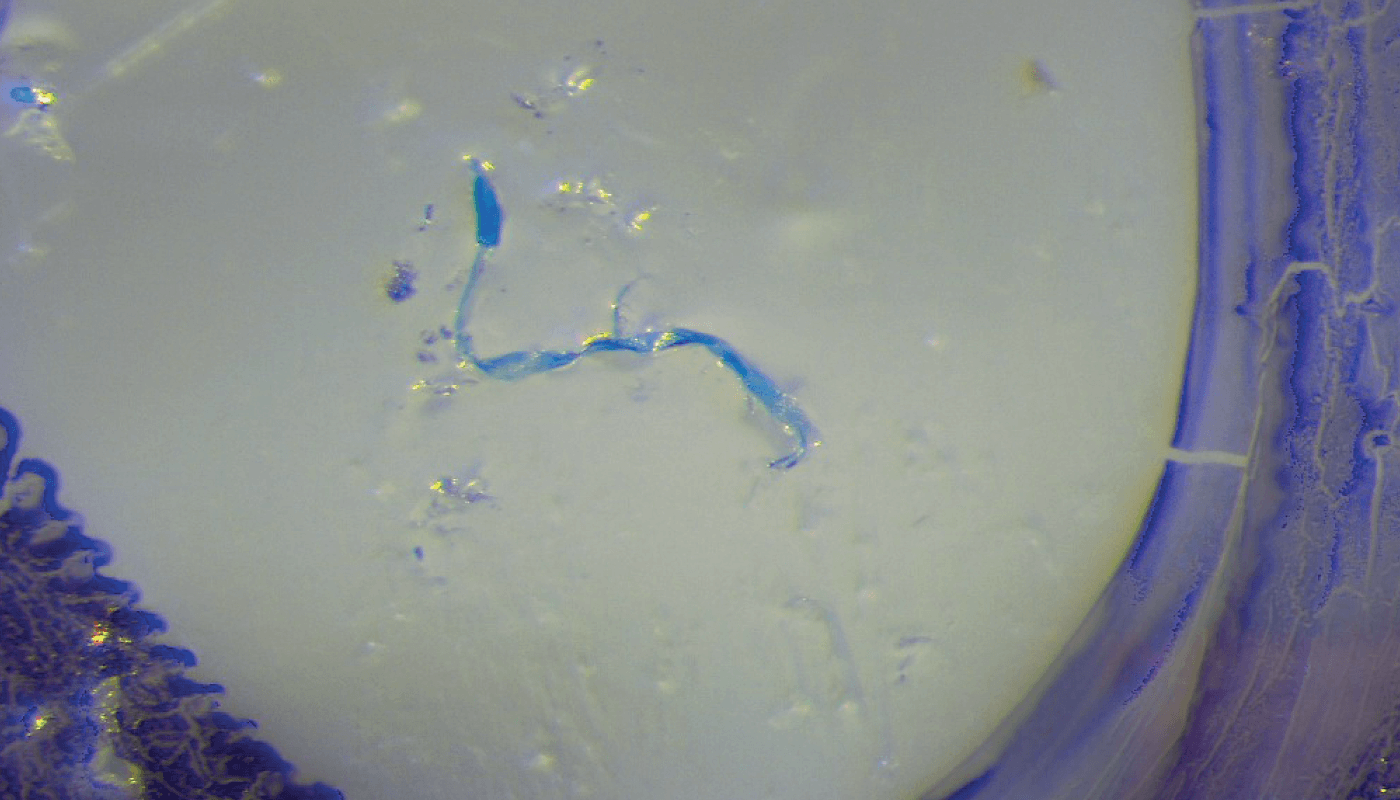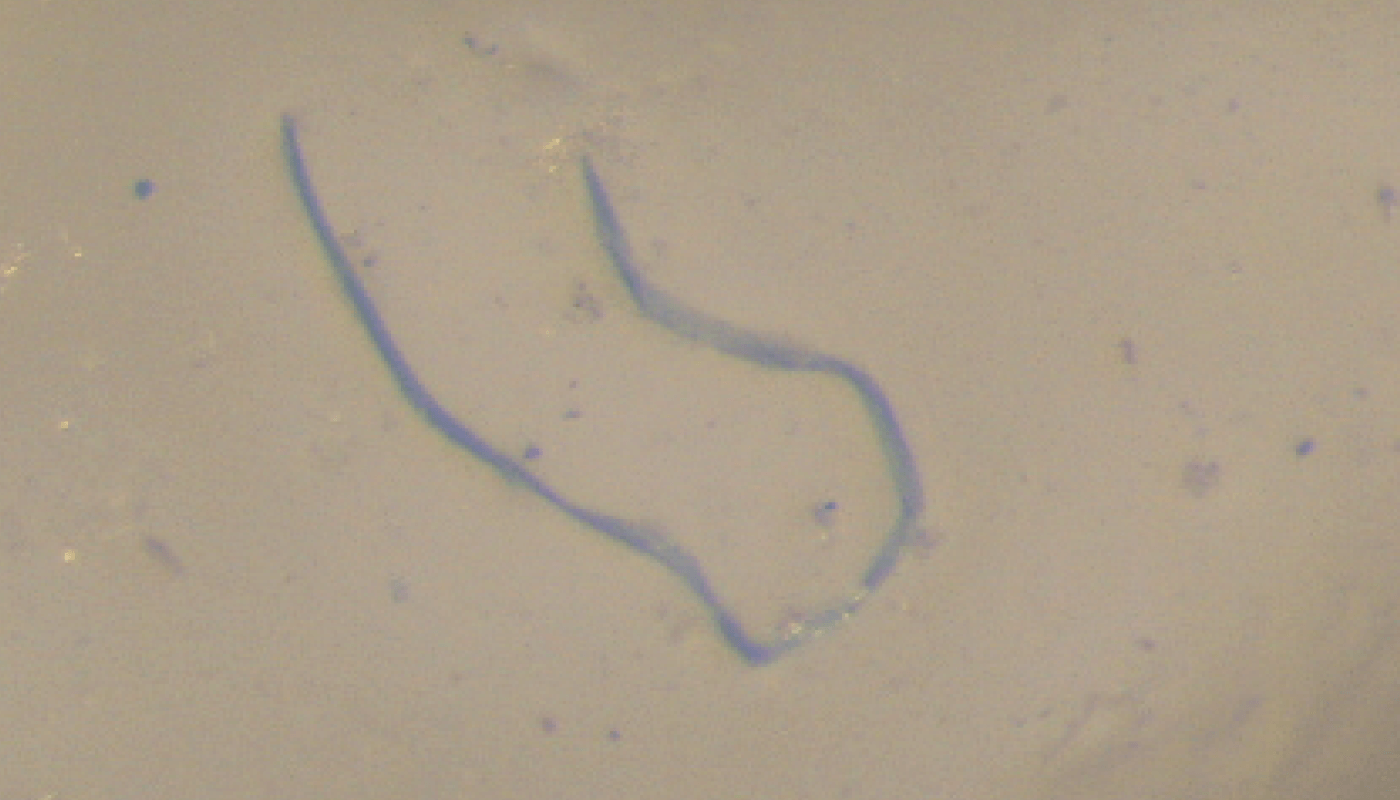Most of us are well aware of the polluting power of synthetic microfibers in the environment. Well, there’s more bad news: natural fibers like cotton – previously thought (or hoped) to be innocuous – could also be having a deleterious impact.
Samantha Athey and Miriam Diamond, along with their team at the University of Toronto, study the occurrence of microfibers in different environmental matrices, such as wastewater, Arctic sediments and fish. While discussing the types of fibers cropping up in their samples, they found there was a common thread (pardon the pun): an abundance of cotton fibers coated with indigo dye. But where were they coming from? Diamond wondered if our precious blue jeans might be the source – and the team set out to investigate.
The researchers started with sediment samples from different habitats, including the deep-sea Arctic, shallow suburban lakes around Toronto, and the Huron and Ontario Great Lakes (1). They used a combination of microscopy and Raman spectroscopy to analyze the chemical composition of the fibers found. “We also ran controlled washing experiments to see if the fibers shed from blue jeans corresponded physically and chemically to those we were finding all over the environment,” says Athey.

Most of the microfibers they documented in the environment were not plastic, but anthropogenically modified cellulose – in other words, cotton or rayon fibers modified with chemical additives like dyes. They also showed that one pair of jeans can release a staggering 56,000 microfibers per wash. Their results prove that remnants of our “natural” clothing are abundant and persist in the environment. “I say ‘natural’ because chemical additives are incorporated into the material during production, and cotton clothing can even accumulate chemicals from our homes or offices as well (2),” adds Athey. “This finding highlights the importance of investigating the fate and impacts of non-plastic fibers, which have historically been neglected in microfiber research.”
Not only have the team highlighted one possible pathway for these fibers to enter the environment – from in-home washing, to wastewater, to the environment – but they have also shown evidence of long-range transport to remote regions like the Arctic. “Now that we’ve determined how widespread these fibers are in aquatic environments, our next steps are to investigate the effects, release pathways and diversion of microfibers and the chemical additives associated with them.”

The takeaway? “Wash your jeans less!” says Athey. “We are not recommending people stop wearing their favorite pair, but there are certainly some key steps we can take. Our past work has already shown how effective washing machine filters can be in combating this issue (3). For consumers, bear in mind that manufacturers themselves suggest only washing your jeans monthly, and if you’re in the market for a new pair then consider going second-hand – these shed less than new jeans and can also help fight the global textile waste problem.”
References
- Samantha N Athey et al., Environ Sci Technol Lett (2020). DOI: 10.1021/acs.estlett.0c00498
- Amandeep Saini et al., Environ Sci Technol, 50, 9289 (2016). DOI: 10.1021/acs.est.6b02038
- Hayley K. McIlwraith et al., Marine Pollution Bulletin 139, 40 (2019). DOI: 10.1016/j.marpolbul.2018.12.012




